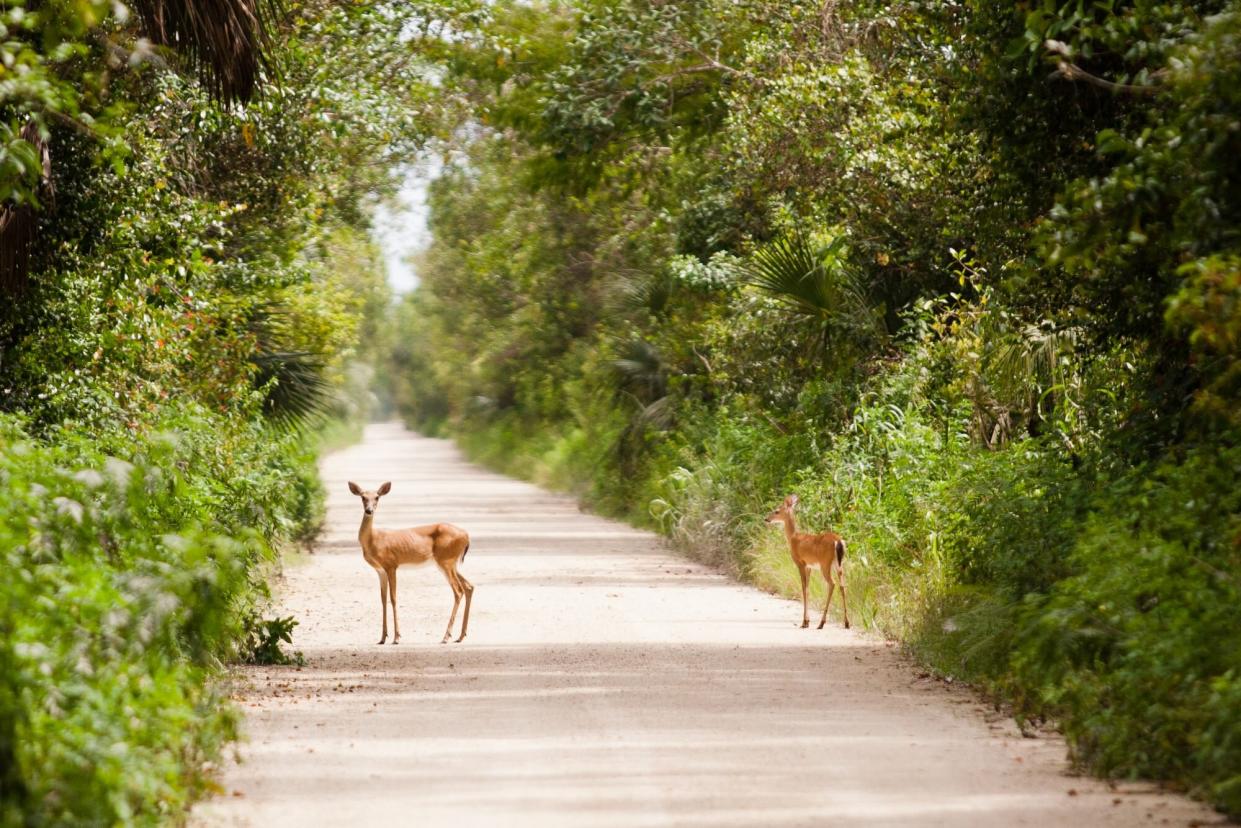Where to See Florida's Key Deer

Victor Estevez/Getty Images
Florida's Key deer have withstood a great deal in their thousands of years in the Florida Keys: hurricanes, infections, parasites, habitat changes. In 2016, a ghastly flesh-eating worm infected the deer. Then, in September 2016, Hurricane Irma landed a direct hit on the deer's habitat around Big Pine Key and neighboring small islands. A continuing rise in sea levels and ongoing development across the Keys also threaten their natural habitats.
Still, the planet's only population of Key deer have blossomed, albeit with losses that hit the small population quite deep: More than 130 Key deer were killed or euthanized during the 2016 worm infestation. That same year, the same number of deer were killed by motor vehicles.
However, thanks to conservation efforts and the opening of the National Key Deer Refuge in 1957, the deer's population has grown from just about two dozen in 1951 to around 1000 today.
The "toy deer" stand about 24 to 32 inches tall at the shoulder. Male Key deer weight 85 pounds maximum and average between 55 to 75 pounds. Female Key deer weigh an average of 65 pounds. Fawns are born weighing about 2 to 4 pounds. They're the smallest subspecies of the North American white-tailed deer, and like their larger counterparts, they expose a white tail when they're on alert.
Unfortunately, as their natural habitats dwindle, the Key deer have ventured into human areas, where locals are known to give them food and water. That not only threatens their health—closely grouped deer can spread disease more easily—but it makes them less reliant on their own instincts and abilities.
Indeed, one deer in Big Pine Key has been seen multiple times brazenly walking up to humans, even going into stores, to get food from humans who are often more than willing to feed the adorable dog-sized deer. This puts the deer at risk of being hit by a car, and it also increases the chances they could injure a human, which would almost certainly lead to euthanasia.
WATCH: Here's the Deal with Those Slimy, Brain-Like Blobs Washing Ashore in Florida and the Carolinas
But like Hemingway's six-toed cats and Key West's wild, roaming roosters, Key deer are an incredibly endearing (no pun intended) part of the Florida Keys experience. If you want to see them yourself, you can head to the National Key Deer Refuge on Big Pine Key. The 9200-acre habitat offers natural, native sanctuary to the deer, as well as several other endangered species, like the Lower Keys marsh rabbits. Check in at the Visitors' Center, and ask them for information on where Key deer have been spotted most recently. They may be observed near watering holes or grazing in mangroves. A short hike might be needed, but you may even be able to see them from your car.
Key deer also swim between islands. They move around in search of fresh water. Don't be alarm ed if you're resting alongside the beach at resort on Big Pine Key, Little Torch key, or one of the many smaller islands nearby, and notice a group of the diminutive deer come whirling through the water for shore.
It's imperative you not feed the deer if you encounter them. Feeding deer makes them more comfortable with humans, and that means they won't be fearful of urban areas, neighborhoods, and dangerous roads. For their protection, observe deer from afar. Do not try to interact with them.

